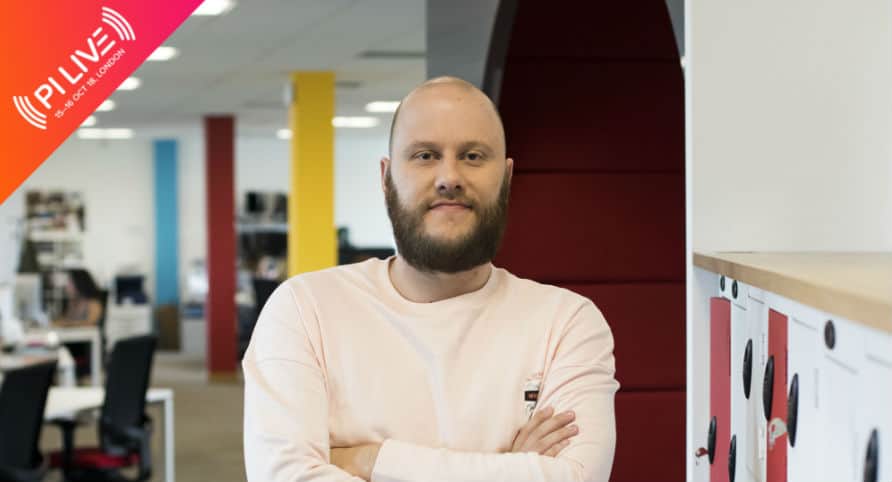It won’t be long until a variety of expert speakers will be gracing the stages over the two days of PI LIVE 2018 to celebrate all things performance marketing. We’re looking forward to seeing our headline and premier sponsors at the show – one of which is e-commerce platform Visualsoft.
Ahead of Visualsoft returning to PI LIVE next month, the company’s affiliate network director Luke Atherton shares his thoughts with PerformanceIN on paid search, e-commerce developments and what he is most looking forward to at this year’s event.
It’s been a while since we last caught up. What’s been happening over at Visualsoft HQ?
Luke Atherton: It’s been a busy year – not just in affiliate but for Visualsoft as a whole. We’ve seen a lot of innovation and changes in the industry, not least of which was GDPR. GDPR was a major undertaking for us; it spanned across almost every department, our e-commerce technology, marketing technology and further. The impact on retailers was also substantial, and we were supporting our clients throughout the whole process.
We’ve also seen significant growth both in terms of new business and recruitment – it’s not showing any signs of slowing down and feels great going into Q4, which is our busiest time of the year.
Specifically, within affiliate, we’ve definitely felt the pinch of GDPR as well as our fair share of the positive growth and expansion of the wider company but it’s also been a year of innovation both in terms of our platform and service offering.
One of the highlight areas has been influencer marketing; it’s actually an area that dips its toe into our SEO, social media and affiliate marketing services and isn’t all that new (we’ve been working with influencers through some of those channels for years). One of the most complex tasks has been directing how those services operate and interact collaboratively when working with influencers. We are in an extremely strong position now to work with influencers across a breadth of marketing services, payment models and tracking solutions.
What developments have caught your attention in creating a seamless online shopping experience this year?
LA: When I think of a ‘seamless’ experience as a consumer I’m often drawn to the purchase/checkout process. It’s one of the biggest bottlenecks on any e-commerce website and customers are often looking for a plethora of information including order totals, shipping options, loyalty schemes and payment options. Add to this that mobile is now considered the new normal and you’ve got a complex set of options that need to be presented to the customer.
Reducing the number of steps, improving user experience and user interface design and adding relevant options for payment and shipping are the areas I most often read about. But that’s all pretty straightforward, it’s what the consumer doesn’t notice that is really interesting.
What opportunities are arising for e-commerce development?
LA: I think the really innovative developments are taking place within ‘micro-moments’ – it’s the new battleground for e-commerce retailers, marketers and developers and it’s extraordinarily complex. The one-size-fits-all approach of the past is now well and truly dead. We are now fighting a battle to both understand customer behaviour on a granular level as well as interact with and influence customers in real-time.
When I say ‘micro-moments’, it’s quite a vague term and could apply to a number of scenarios. Most commonly, though, we mean in-the-moment decisions by customers, whether that be research or purchase. Think:
– I want to do
– I want to know
– I want to buy
– I want to go
In my opinion, we are still very much in the middle of seeing how retailers will tackle this. Some of the industry giants (such as Amazon) have already invested huge amounts of resources into this area and it’s definitely going to be an exciting couple of years in the industry. The advent of artificial intelligence and machine learning into a more widespread market is also pushing the boundaries of personalisation.
What digital strategies does Visualsoft offer to retailers that are new to e-commerce?
LA: It’s fair to say that the strategy for an established retailer/brand is completely different from those that are new to online trading, but in general, the strategy that we produce for each client is bespoke. Of course, we have guidance and a framework that helps set the planning in motion and guide our internal teams but the final product is often bespoke to that client.
Certain marketing channels and ideas are of course better than others when trying to establish an online retailer that is completely new to the online world. It’s often a careful balancing act of return-on-investment versus brand awareness, particularly in competitive markets such as fashion. Our strategies span across multiple marketing channels, which is one of the biggest benefits to our vast in-house knowledge.
We are about to go into Q4, which is always a difficult time to a new e-commerce website and presents unique challenges. Most commonly, the price competitive nature of that time of the year (and thus lower margins).
Speaking purely from an affiliate perspective, our technology allows for a vast customisation of commission allocation and data tracking, which allows retailers to offer competitive rates without losing margin. We avoid the all-too-common approach of dropping all commissions for the quarter by monitoring the actual profit margin of individual products and setting rates accordingly.
Many products and brands have strong enough margins to sustain a strong commission throughout the quarter but without that option retailers simply hammer down on all commissions.
The paid search industry has evolved massively – what are we to expect going forward?
LA: I think it’s safe to say that the changes are still not finished. Machine learning is definitely an area I think we are going to see expand more and more. Google has recently talked about their ‘responsive search ads’, which combines creativity with their machine learning to deliver more relevant and valuable ads, so watch this space.
That really highlights one of the biggest driving forces in paid search: relevance. It’s not a new concept by any stretch and we might never see the end of its development.
Do you believe that an all-inclusive approach is a key to success in growing affiliate and retail sales?
LA: It’s impossible to say that having every publisher on an account is a good or bad thing or that by being restrictive or all-encompassing is a positive or negative. It really does depend on the client’s objectives, margins and brand. Quantity isn’t always the best way to grow an account but you do need to have a healthy number of publishers and you cannot be completely reliant on just one or two.
Whenever we review an account’s performance we try to match up different publisher verticals or individual publishers to gaps in the strategy. For example, a client that wants to showcase how price competitive they are should have price aggregation publishers on the account but a client who does not trade purely on price, who does not price-match or whereby the product is not driven by its pricing would likely avoid those publishers as the effects could be more harmful than good.
You’ll be attending PI LIVE again this year; what are you most looking forward to and what are you hoping to achieve at the event?
LA: We are definitely excited to attend the various sessions throughout the event, they are always extremely informative. In terms of our goals for the event, we always aim to interact with as many publishers as possible and come away with both new and stronger relationships – that’s our primary goal.
Lastly, following a successful 12 months, what are your plans for the rest of the year?
LA: Q4 is our busiest time of year and while our planning is almost complete we now have delivery to consider. Roll on a well-deserved break!
Want to find out more about PI LIVE? Head over to this page.

